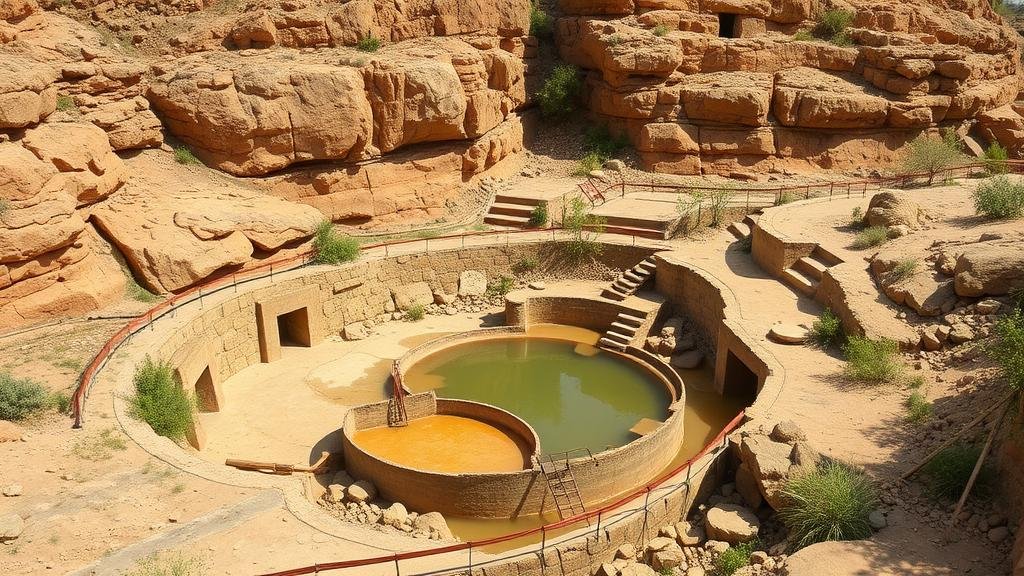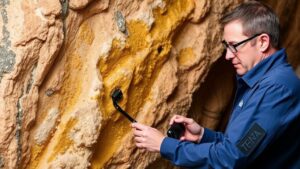Understanding the Role of Hand-Panned Alluvial Deposits in Antiquity
Understanding the Role of Hand-Panned Alluvial Deposits in Antiquity
Hand-panned alluvial deposits have played a pivotal role in human history, especially in relation to resource extraction and settlement patterns. This article explores the significance of these deposits in antiquity, outlining their formation, usage, and the implications they had on ancient societies.
The Formation of Alluvial Deposits
Alluvial deposits are sediments that have been transported and deposited by flowing water, typically found in riverbeds, floodplains, and deltas. The processes that lead to the formation of these deposits involve:
- Erosion: Water flows over land, breaking down rocks and soil.
- Transportation: The sediment is carried downstream by the flowing water.
- Deposition: When the waters velocity decreases, the sediments settle, forming alluvial deposits.
These deposits are often rich in minerals and nutrients, making them highly valuable for various applications, including agriculture and mining.
Hand Panning: Techniques and Historical Context
Hand panning is a method used to separate valuable minerals, such as gold, from alluvial deposits. This technique was widely utilized in ancient societies, particularly during the gold rushes of the 19th century, although its origins date back millennia.
Historically, civilizations such as the Egyptians and the Incas effectively used hand panning to extract resources. Evidence suggests that ancient Egyptians employed simple tools to sift through river sediments, leading to significant gold production.
Key Applications of Hand-Panned Alluvial Deposits
The hand-panning of alluvial deposits primarily served two critical purposes in antiquity:
- Resource Extraction: Hand-panning allowed ancient societies to access precious metals essential for trade, currency, and cultural artifacts.
- Agricultural Enhancement: The nutrient-rich sediments were used to enrich soils, promoting agricultural productivity in areas reliant on riverine ecosystems.
Case Studies: Societies Influenced by Alluvial Deposits
Multiple ancient cultures illustrate the impact of alluvial deposits on their development:
- The Nile River Civilization: The annual flooding of the Nile deposited nutrient-rich silt along its banks, which facilitated agricultural abundance and supported one of historys most prosperous civilizations.
- The Andes Mountains and the Incan Empire: Alluvial deposits in river valleys were hand-panned for gold and other minerals, contributing to the wealth and architectural legacy of the Incas, including the construction of Machu Picchu.
Challenges and Sustainability Concerns
While the advantages of hand-panned alluvial deposits are significant, they also pose challenges, particularly in terms of sustainability:
- Environmental Impact: Overextraction can lead to habitat destruction and riverbank erosion.
- Social Issues: The competition for resources often resulted in conflict and exploitation among communities.
Modern Relevance of Ancient Techniques
Understanding the methods employed in antiquity helps inform modern practices. Today, hand panning is still used in artisanal mining, which promotes sustainable mining practices when conducted responsibly.
Plus, insights gained from ancient societies inform contemporary agricultural techniques, emphasizing the importance of utilizing alluvial deposits to enhance soil fertility.
Conclusion: The Lasting Legacy of Hand-Panned Alluvial Deposits
Hand-panned alluvial deposits were not merely a source of precious metals; they were integral to the development of agricultural systems and economic frameworks in ancient societies. By appreciating their role in antiquity, we embrace a broader understanding of the relationship between natural resources and human civilization.
As we move forward, it is essential to adopt sustainable practices rooted in the lessons gleaned from the past to ensure that future generations can benefit from the riches that alluvial deposits have to offer.



